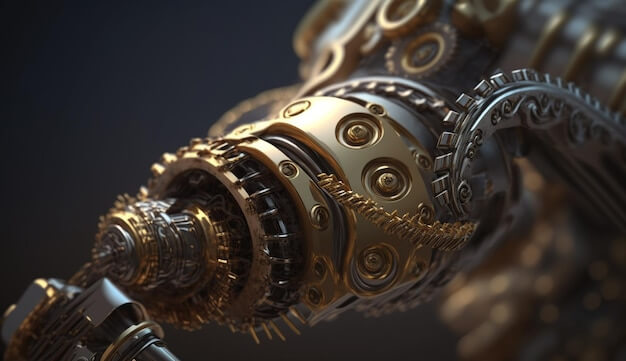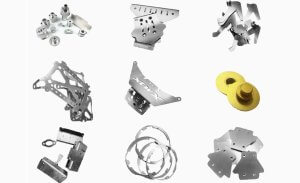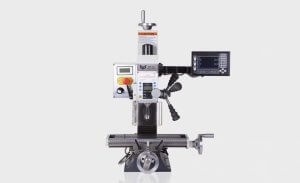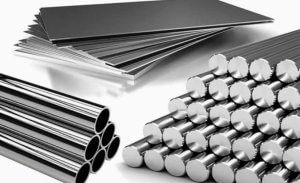Introduction to CNC Machining and Bronze Alloys
CNC machining, or Computer Numerical Control machining, is a manufacturing process that uses pre-programmed computer software to guide the movements of factory machinery and tools. This technology enables precise control in terms of speed, position, coordination, and feed rate which is crucial for high-quality manufacturing outcomes. Components manufactured through this method find utility in several industry sectors from automobile, aerospace, defense, to electronics; ensuring efficient production of complex parts with high accuracy and consistency.
A pivotal factor behind the effectiveness of CNC machining is the selection of appropriate materials, among which bronze alloys merit special attention. As an alloy of copper and tin, bronze possesses enhanced hardness, improved corrosion resistance, excellent wear properties, reduced friction, and superior machinability compared to pure metals. These characteristics make bronze alloys suitable for various demanding applications where durability and easy machine ability are necessary considerations.
The Importance of Materials in CNC Machining
In the realm of Computer Numerical Control (CNC) machining, one factor that significantly impacts the final product is the choice of material. Different materials come with varying properties that influence their adaptability to various manufacturing processes and subsequently, the quality of end products. Ideally, a good candidate for CNC machining should possess specific necessary characteristics. The metal properties such as strength, hardness, heat resistance, electrical conductivity, chemical stability are considered.
- Strength: A robust material can withstand significant handling throughout the machining process.
- Hardness: Hard materials resist abrasion and deformation, essential aspects during milling and cutting procedures.
- Heat Resistance: High melting point materials are suitable for applications involving high-speed operations which generate substantial heat.
- Electrical Conductivity: Materials with good electrical conductivity are crucial when it comes to Electrical Discharge Machining (EDM).
- Chemical Stability: Chemical resistant materials bode well where corrosive substances may be involved.
An example honing on this principle would be bronze alloys’ application in modern CNC machining platforms. Bronze alloys present an ideal case due to their commendable durability vs machinability index, thus widely used across different industries.
An In-depth Look at Bronze Types and Their Components Common in CNC Machining
Bronze alloys play a crucial role in modern CNC machining, offering a balance between durability and machinability. Understanding the components and properties of different bronze types is essential for achieving optimal results in machining applications.
Characteristics of Durability in Bronze Alloys
Bronze alloys are widely known for their exceptional durability characteristics. This is greatly attributed to their high hardness quality and extensive resistance against wear and tear. Specifically, the impressive toughness of bronze stands out due to the rigidity it offers, allowing components made from these alloys to endure massive pressure and harsh conditions without getting deformed or damaged. Furthermore, bronze alloys resist corrosion significantly well, lending an extended lifespan even when constantly exposed to moist environments or chemical substances.
- Hardness: The reciprocal deformation associated with bronze alloys contributes essentially to its distinguishing hardness. Thus, providing a strong defense against scratches and other forms of physical damages.
- Resistance to Wear: Due to their lower coefficient of friction, bronze alloys show significant resistance towards deteriorative processes like abrasion, making them ideal for applications involving consistent mechanical contact.
A vivid example that illustrates this durability is the utilization of bronze alloy constituents in ship propellers. Despite relentless interaction with salty seawater and intense operational demands, bronze-alloy-based propellers remain undamaged over prolonged durations, clearly highlighting the remarkable durability of bronze alloys.
Understanding the Machinability of Bronze Alloys
Machinability refers to the ease with which a material can be cut or shaped using machine tools. Certain bronze alloys possess ultrahigh machinability due to their physical properties and consistency in composition, leading to decreased tool wear and less downtime when machining operations are carried out. Among those high-machinable alloys, Leaded Tin Bronze – also known as C93200 or SAE 660 – stands out.
Instructions for application:
- Made up of approximately 83% copper, 7% tin, 7% lead, and 3% zinc, this alloy is highly utilized in manufacturing settings.
- The presence of lead, in particular, increases its lubricity, allowing for smoother cutting processes.
- Thanks to these characteristics, C93200 is often employed in applications such as bushings and bearings where both durability and precision are key factors.
Weighing Durability versus Machinability in Bronze Alloys: What Matters Most?
When it comes to the use of bronze alloys in CNC machining, striking a balance between durability and machinability is critical. Yet, this intricacy largely hinges on project specifics. There are different occasions where one characteristic outweighs the other. For instance:
- In applications requiring high-stress tolerance such as aerospace components or architectural structures, durability takes precedence over machinability. The ability of the bronze alloy to withstand wear and tear becomes quintessential in these instances.
- Conversely, when fabricating intricate designs with complex geometries like jewelry or decorative crafts, the ease of cutting and shaping -machinability- is prioritized over endurance.
This equilibrium, however, isn’t a choice made in isolation from project prerequisites. Each particular context determines which of these two factors should be given more consideration. Therefore, while weighing durability against machinability, engineers need to bear in mind the end-use purpose, longevity expectations and overall performance considerations.
Advanced CNC Machines and Their Role in Working With Bronze Alloys
In modern manufacturing, advanced Computer Numerical Control (CNC) machines have revolutionized the production process of bronze alloys. Precision engineering enabled by CNC technology offers fine-tuned control over durability and machinability factors, significantly increasing efficiencies while ensuring superior performance characteristics.
The FANUC Robodrill is a sterling example of an implement that efficiently maneuvers the dichotomy between solidity and workability. Its high-speed milling capability facilitates smooth cuts on bronze surfaces without compromising the inherent toughness of the alloy, effectively maintaining much-needed robustness within finished parts. Additionally, it utilizes adaptive software to modulate settings based on material density, enabling evener stress distribution of machine power for optimum results. The step-by-step overview of this process is as follows:
- Bronze billets are fixated onto the CNC machine fixture.
- The pre-programmed design parameters guide the movement of cutting tools.
- Cutting speed, direction, and angles are altered according to complex contours demanded by intricate designs, optimizing the precision of cuts.
- Sophisticated coolant systems prevent overheating during machining, preserving the integrity of both machine components and the bronze workpiece itself.
- Completed units undergo final quality checks before dispatching, ensuring conformance with prescribed standards.
This surgical approach lends CNC machining its enviable position within metalworking sectors and underscores the innovative measures used to negotiate durability-machinability conflicts presented by hardy materials such as bronze alloys.
Conclusion: The Role of Bronze Alloys in Modern CNC Machining
In summary, bronze alloys play a pivotal role in modern Computer Numerical Control (CNC) machining. Their key properties such as high durability and excellent machinability make them apt for various industrial applications. Understanding these characteristics can significantly aid in making informed decisions related to CNC operations.
The balance between the durability and machinability is particularly critical. For instance, choosing an alloy with high durability but low machinability could slow down production while opting for highly machinable but less durable material might reduce the lifespan of the components produced.
- Durability: Durability refers to an alloy’s ability to resist wear and tear and sustain in harsh environment conditions. Bronze alloys are known for their exceptional fatigue resistance and general durability.
- Machinability: On the other hand, machinability involves how easily a material can be cut into the desired shape with minimal efforts and maximum precision. Bronze alloys are appreciated for their efficient machinability.
Taking these factors into account i.e., durability and machinability, it becomes easier to select the most suitable material based on needs of specific CNC operations.
Understanding the Influence of Bronze Alloys in CNC Machining
The effectiveness of Computer Numerical Control (CNC) machining is often determined by the choice of materials used. Among multiple alternatives, bronze alloys have emerged as particularly suited for modern CNC machining strategies due to their unique traits and properties. A significant pain point users encounter pertains to understanding the complex relationship between durability and machinability. On one hand, durability represents the strength and longevity of a part made from the metal, which is directly impacted by the hardness or resistance of the alloy material like bronze. On the other hand, machinability refers to the ease with which these materials can be cut or machined without causing wear or damage to cutting tools.
- Durability: Bronze alloys are renowned for their excellent corrosion resistance and mechanical properties under stress, making them incredibly durable in most environments. They provide strength and longevity to parts manufactured through CNC machining.
- Machinability: The softness and low friction coefficient of bronze alloys contribute to their high machinability – they can be efficiently worked upon using standard machine tools without excessive tool wear. However, there’s an inverse relation with durability because softer metals tend to be less sturdy. So, finding a balance is crucial.
This intricate balance involves technical principles centered around metallurgical science and thermodynamics, ensuring a harmonious delineation of duty to yield the best possible results.
Other Articles You Might Enjoy
- Understanding the Bead Blasting Process in CNC Machining(milling machining Maud)
Bead blasting is an essential process in the CNC machining world, known for offering a refined finish to various surfaces. This method uses pressure or suction to propel tiny glass…
- Ceramic Tooling in CNC Machining: Breaking the Myths About Durability and Performance?
CNC Machining and Ceramic Tooling: Busting the Myths Computer Numerical Control (CNC) machining is an advanced method of manufacturing where pre-programmed software controls the movement of factory machinery, giving intricate…
- Zirconium vs. Titanium: Comparing CNC Machinability and Corrosion Resistance?
CNC Machinability and Corrosion Resistance: Zirconium vs Titanium The manufacturing industry often has to juggle a plethora of considerations while selecting materials for product manufacture. Top among these are two…








